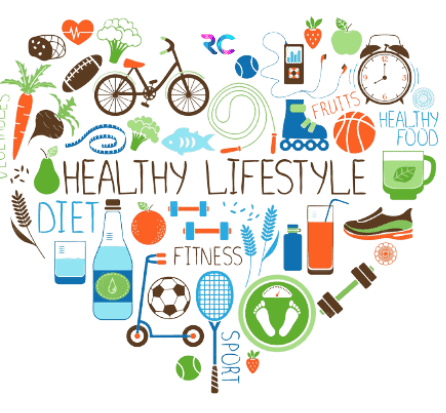
What are Proteins: The Building Blocks of Life
Proteins are the unsung heroes of life, serving as the fundamental building blocks and workhorses within biological systems. These complex molecules play diverse roles, from providing structural support to facilitating chemical reactions and regulating various processes in living organisms. In this extensive exploration, we will delve into the captivating world of proteins, uncovering their structure, functions, classifications, and the vital significance they hold in maintaining life as we know it.
The Molecular Marvel: Structure of Proteins
Proteins are large, complex molecules composed of smaller units called amino acids. Amino acids are organic compounds containing an amino group (-NH2) and a carboxyl group (-COOH). There are 20 different amino acids that serve as the basic building blocks of proteins. These amino acids are linked together through peptide bonds in a specific sequence to form a polypeptide chain.
A protein’s unique three-dimensional structure is critical to its function. The structure of a protein can be broadly categorized into four levels:
- Primary Structure: This refers to the linear sequence of amino acids in a polypeptide chain. The specific sequence determines the protein’s ultimate shape and function.
- Secondary Structure: The primary sequence folds into regular structures like alpha-helices and beta-sheets, stabilized by hydrogen bonding between amino acids.
- Tertiary Structure: The secondary structures fold and twist further to create a three-dimensional shape. Various interactions, including hydrogen bonding, disulfide bridges, and hydrophobic interactions, contribute to this level of structure.
- Quaternary Structure: Some proteins consist of multiple polypeptide chains, and the arrangement of these subunits in relation to each other forms the quaternary structure.
The Many Facets of Protein Functions
Proteins are incredibly versatile molecules, with functions that span a wide range of activities crucial for life:
1. Enzymatic Functions
Many proteins are enzymes, serving as biological catalysts that accelerate chemical reactions within cells. Enzymes play a pivotal role in digestion, energy production, and various metabolic pathways.
2. Structural Support
Proteins provide structural support to cells and tissues. Collagen, for example, is a fibrous protein that forms the basis of connective tissues, giving skin, bones, and tendons their strength and resilience.
3. Transport and Storage
Proteins are involved in transporting molecules within and between cells. Hemoglobin, found in red blood cells, transports oxygen from the lungs to tissues throughout the body. Similarly, proteins like ferritin store iron for future use.
4. Immune Defense
Antibodies, a type of protein, are crucial components of the immune system. They recognize and neutralize foreign invaders such as bacteria and viruses.
5. Signaling and Communication
Proteins play a pivotal role in cell signaling. Hormones, which are signaling molecules, are often proteins that regulate various physiological processes.
6. Movement and Contractility
Muscle contraction is driven by the interactions between proteins actin and myosin. These interactions allow muscles to generate force and movement.
7. Regulation and Control
Proteins also serve as regulators of gene expression and cellular processes. Transcription factors, for instance, control which genes are turned on or off in response to various signals.
Classifying Proteins: A Diverse Family
Proteins are classified into various categories based on their structural and functional characteristics. Some common protein classes include:
- Enzymes: As mentioned earlier, enzymes catalyze chemical reactions, facilitating essential biochemical processes.
- Structural Proteins: These proteins provide support and maintain the structure of cells and tissues. Examples include collagen, keratin, and tubulin.
- Hormones: Hormones are signaling molecules that regulate physiological processes, including growth, metabolism, and reproduction. Insulin and adrenaline are examples of protein hormones.
- Transport Proteins: These proteins facilitate the transport of molecules across cell membranes or within the bloodstream. Hemoglobin and albumin are notable examples.
- Antibodies: Antibodies are part of the immune system and help identify and neutralize harmful pathogens.
The Protein Synthesis Saga: From DNA to Protein
The synthesis of proteins is a complex and highly regulated process involving the conversion of genetic information stored in DNA to functional proteins. This process, known as protein synthesis or translation, occurs in two main stages: transcription and translation.
- Transcription: In the nucleus of a cell, a specific segment of DNA, known as a gene, is transcribed into a complementary RNA molecule called messenger RNA (mRNA).
- Translation: The mRNA molecule travels to the ribosomes in the cytoplasm, where it serves as a template for protein synthesis. Transfer RNA (tRNA) molecules carrying specific amino acids attach to the mRNA in a sequence dictated by the genetic code. This assembly of amino acids forms a polypeptide chain, which folds into a functional protein.
Proteins and Human Health
The significance of proteins extends beyond their biochemical functions—they are essential for overall health and well-being:
1. Nutrition and Diet
Dietary proteins provide the essential amino acids required for the body’s protein synthesis. Consuming a variety of protein sources, such as lean meats, dairy, legumes, and nuts, ensures a balanced intake of amino acids.
2. Muscle Growth and Repair
Proteins are critical for muscle growth, repair, and maintenance. Athletes and individuals engaged in physical activity require adequate protein intake to support muscle recovery and development.
3. Enzyme Function and Metabolism
Enzymes, primarily composed of proteins, drive various metabolic reactions that are essential for energy production, nutrient absorption, and waste elimination.
4. Immune System Function
Antibodies and other immune system proteins defend the body against infections and diseases. A deficiency in certain proteins can compromise immune responses.
5. Protein-Related Disorders
Protein-related disorders can arise from genetic mutations that affect protein structure and function. Examples include sickle cell anemia and various inherited metabolic disorders.
Conclusion
Proteins, the intricate molecules constructed from the simple sequence of amino acids, are the cornerstones of life. Their structural diversity and multifaceted functions make them indispensable players in every aspect of biology, from maintaining cellular structure to orchestrating complex biochemical reactions. As we continue to unravel the mysteries of protein structure and function, we gain deeper insights into the mechanisms underlying health, disease, and the intricate dance of life itself.



